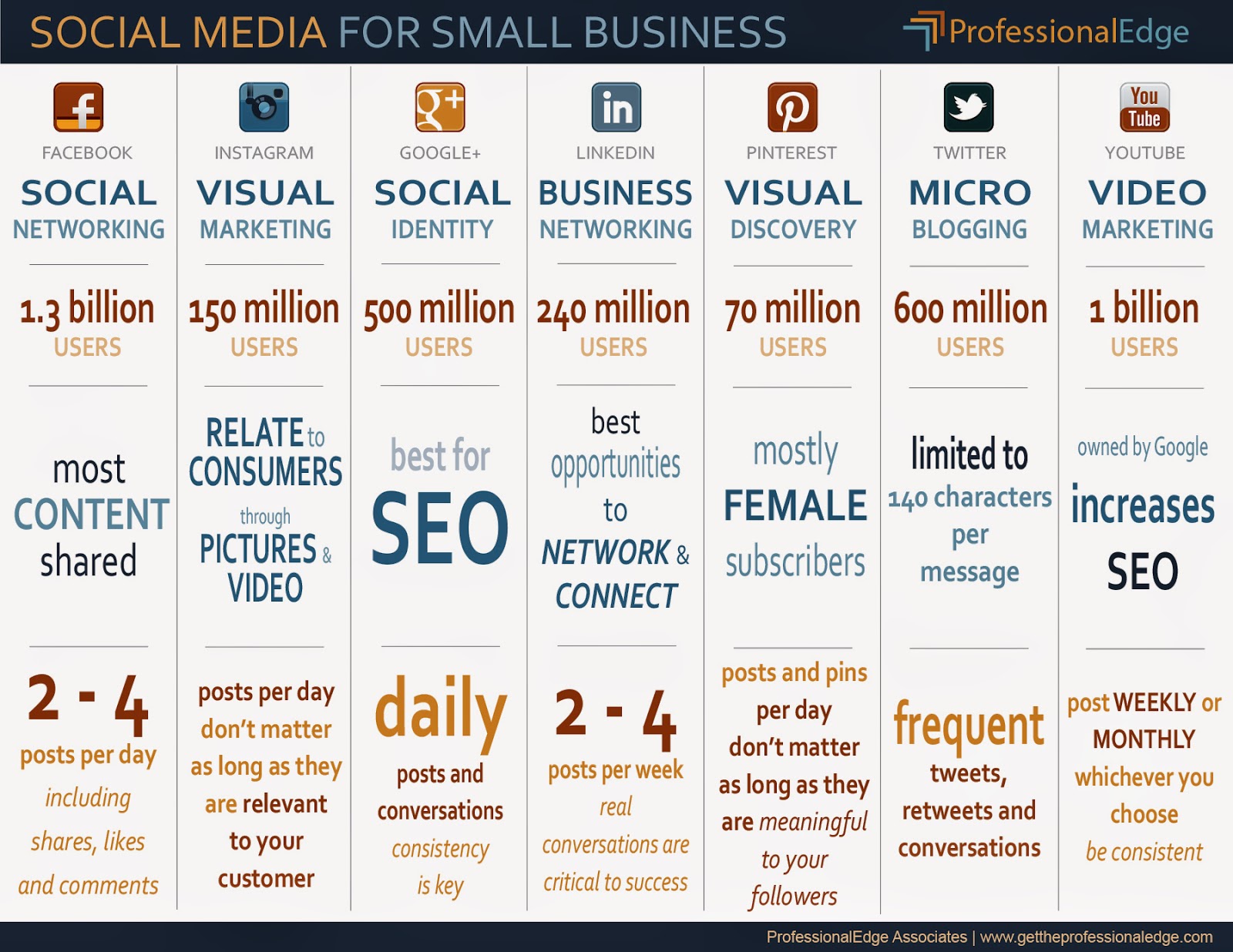As a small business, you have many challenges you face every
day. Not only is your time spread thin, your dollars are stretched tighter than
pantyhose on Miss Piggy. And you still have to work on your business while
you are working in your business.
Here is an important quote from Henry Ford.
“A man who stops advertising to save money
is like a man who stops a clock to save time.”
Even with
everything else you have going on in your business, you must make the time and
the investment to market your business. For small businesses, social media is
an excellent way to continue to market your business without a large investment
of money. But it does take time, and you have to start somewhere. So how do you
navigate the many different social media opportunities available to you?
To help cut through
some of the clutter, this will be the first in a series of articles on Social
Media for Small Business. We will start with the top seven social media sites that are
appropriate for small business – Facebook, Instagram, Google+, LinkedIn,
Pinterest, Twitter and YouTube.
To aid
in breaking down the overwhelming amount of information, we've created an
infographic that illustrates the most useful information about each of these
sites. Click on the graphic to open a larger version in a new window.
In
this article, we will focus on how to determine which social media
opportunities will work best for your business.
Let’s
start with what each of these sites can do for you.
Facebook is a social
networking site with 1.3 billion users and growing rapidly. Because of this
high number of users, it is where the highest amount of content is shared.
Facebook is a medium for businesses who want to connect with individuals
or other small businesses. It’s a great place to post important information
about your business and to have conversations with customers and potential
customers about how you can meet their needs.
Instagram is a visual
marketing site with 150 million users. It allows you to relate to consumers
through pictures and video. Instagram is a medium used by photographers
and videographers to showcase their talents and could also be a good way for
small boutiques, fashion designers or similar small businesses to post photos of their merchandise.
Google+ is a social networking
and identity site with 500 million users. Google+ is similar in a lot of ways
to other social networking sites, so you may think it is redundant. But
consider that is owned by Google, one of the largest search engines in the world,
so every time you post on Google+ it increases your SEO (search engine
optimization). Google+ also
includes an authorship tool that associates web-content directly with its
owner/author.
LinkedIn is a business networking site with 240
million users. It offers opportunities to network and connect with business
associates and potential business customers. It is best used to make and
cultivate connections for your business.
Pinterest is a visual discovery site with 70 million
users, the majority of whom are female. This site allows you to post or pin
pictures of things you like or want to share and to connect with others through
their pins and posts. Pinterest is a tool to enhance your other social
networking by sharing pins and posts on other sites. Small businesses who want
to share photos of their merchandise, recipes or items in a portfolio should
consider adding Pinterest to the mix.
Twitter is a micro blogging site with 600 million
users. Each post is limited to 140 characters and can now also include a
graphic or photo. Twitter is used primarily to share real-time information
about what is going on in your business. It is a tool for on-the-spot
communication about events, sales and other promotions and can also be used to
share blog posts and other important information about your business. Twitter
takes an investment of time overall, but there are many tools available to
help you schedule and plan posts in advance. We’ll talk about them in more
detail in a future article in this series.
YouTube is a video marketing tool with 1 billion
unique users each month. It is owned by Google so it also helps increase SEO. YouTube provides and opportunity for businesses to share how-to’s, training and other
informational videos about your business that can be added to posts in other
mediums to increase visibility. Creating videos doesn't have to be expensive
and can be done on most laptops or tablets now with only an investment of time.
They should be considered as an add-on to any small business marketing strategy.
That is each of
the top 7 social media opportunities in a nutshell. There are of course many
other ways for businesses to use each of these sites. Please comment below to share how
you are using these or other sites or how you want to incorporate them into
your small business marketing strategy.
Please take a
moment to share our blog with your colleagues and friends who you think may
benefit. The next article will dive further into each of these sites and talk
about good posting strategies to enhance your social media effectiveness.














.jpg)

